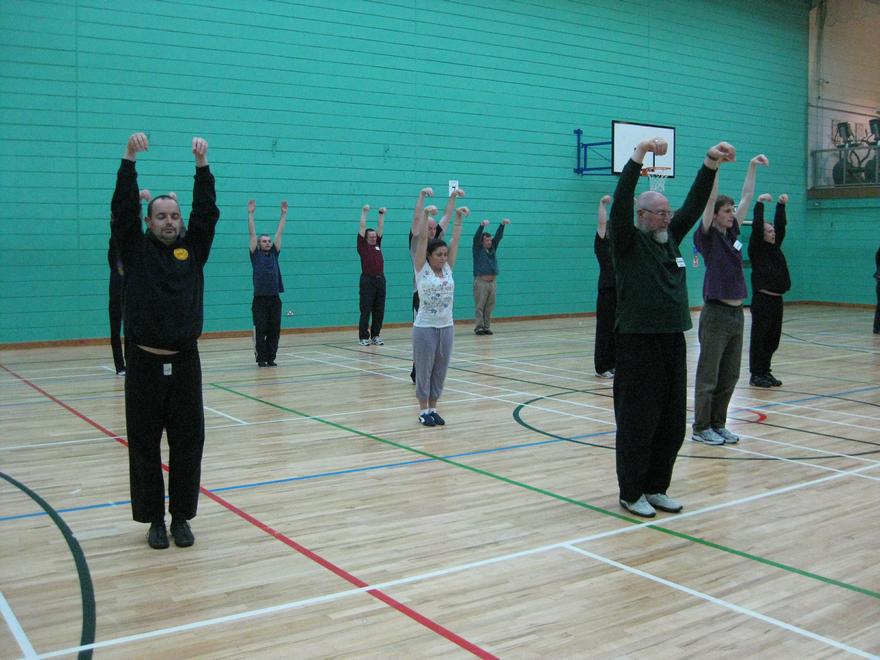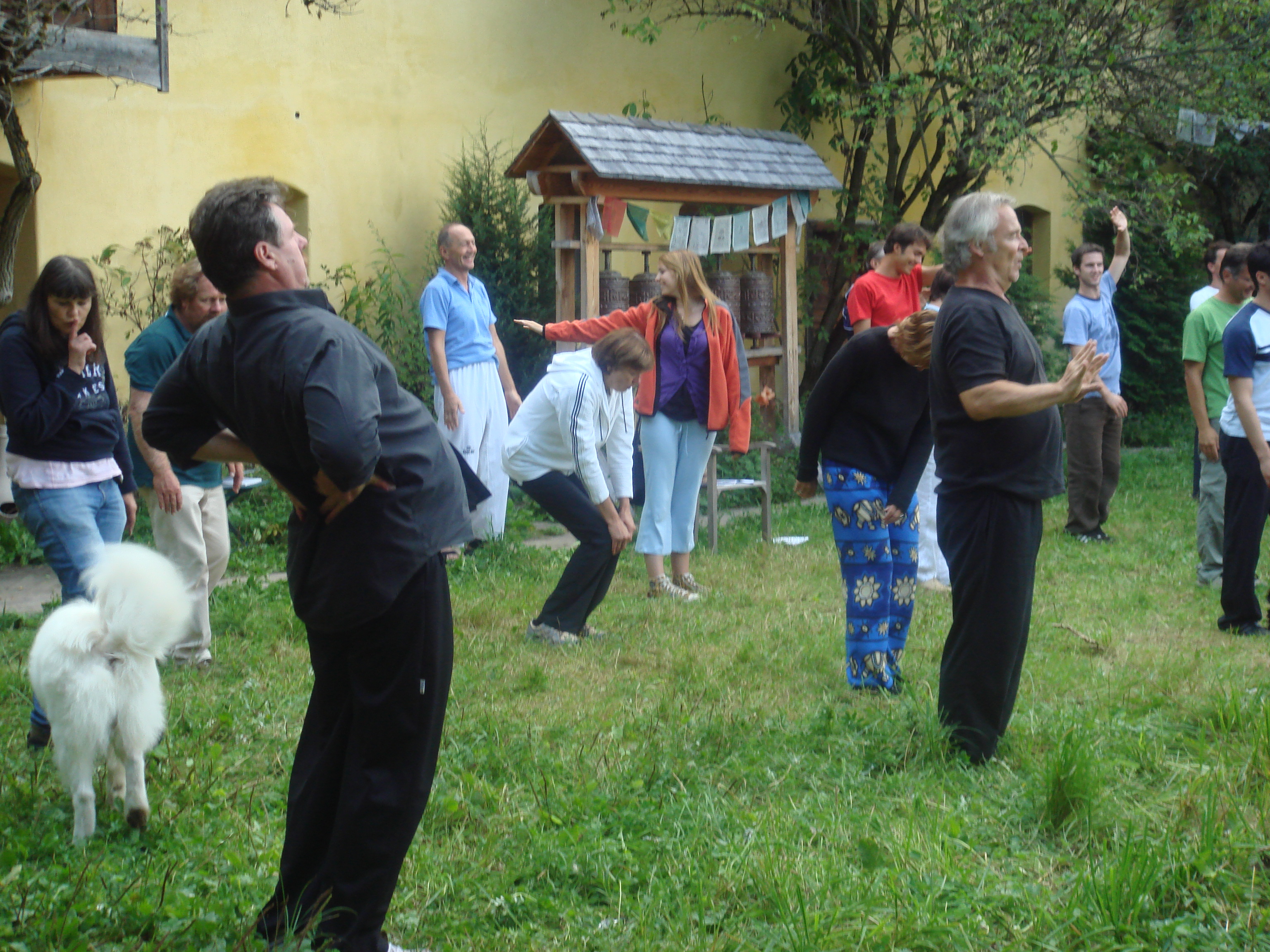BITTER TRAINING IN THE PAST, ENJOYING OURSELVES IN OUR SCHOOL

We have become ridiculously cost-effective in our training
Question
The training descriptions for the 72 Shaolin Arts as recorded in classics often depict extremely hard and demanding training. Occasionally you've mentioned that the norm for kungfu training in the past was "bitter training", ie. hard and often punishing training with benefits sometimes accumulating only slowly over time.
However, in Shaolin Wahnam we emphasize cost-effectiveness and always enjoy our training.
Could you describe to us how the systematic training of these three arts was in the past, and how it will be under your teaching for us in Shaolin Wahnam? What are the differences for these different ways of training in terms of our daily practice, progress and attainment?
Sifu Markus Kahila, Finland
Answer
The hallmark of training in the past as well as now is “ku lian”, which means “bitter training”. Practitioners daily endure difficult and often tedious training for many years, and eventually derive some remarkable results, like being able to take punches and kicks without injury, causing serious damage on opponents without outward marks, and being able to run fast or jump high.
There is a saying that “three years constitute small success, ten years constitute big success” , which is “san nian xiao cheng, shi nian da cheng” in Chinese. In the past, if a practitioner was lucky enough to learn a special art and trained diligently everyday for three years, he would attain a small success in the art. If he trained diligently for ten years, he would attain a big success.
It should be noted that “ku lian” or “bitter training” does not mean harmful training, which unfortunately is not uncommon among many martial artists today. The training is enduring and demanding, but it does not bring adverse effects. This is a very important principle in genuine kungfu training, and is linked to the philosophy of “seen keong sun, hou fong sun” (in Cantonese), which means “first be healthy, only then think of combat”. Many martial artists today harm themselves in their training, resulting in deformed hands and displaced hips.
To many people, kungfu training in Shaolin Wahnam is like a big joke. We tell our students to enjoy their training, not to endure. Yet, we have better results! Others may be angry at this statement; that is their problem. I am just telling the truth. While other students try to get the best from their training, we tell our students to work at about 30% of what they could get, otherwise they might over-train!
This is because we have become ridiculously cost-effective. If a typical Shaolin Wahnam student today do not train below his potential, it is likely that he will soon over-trained. Over-training is bad; it will bring adverse effects. In some ways, over-training is even worse than wrong training.
Let us look at some quantified examples to examine our cost-effectiveness and our risk of over-training. Suppose a practitioner needs 10,000 units of benefits to be successful in the art he trains.
Suppose he trains Golden Bell. He needs 10,000 units of energy to protect himself from hits and kicks without sustaining injury. If he trains Marvelous Fist, he needs 10,000 units of internal force to hurt an opponent without contact. If he trains Thousand Steps, he needs 10,000 units of flowing energy to run fast over a great distance without feeling tired and without panting for breath.
Suppose that for each successful training session, he develops 100 units of benefit. Of course, when he is successful, he may develop more or less than 100 units of benefit, and it is not necessary that 10,000 units mark success. But giving some quantification gives a clearer picture of the process of training, and choosing 100 units and 10,000 units makes calculation easy. Any figures may apply, but the principles are the same.
So, if a practitioner derives 100 units of benefit everyday, he needs to train for 100 days to be successful in his art. But most practitioners, except those in Shaolin Wahnam and which will be explained later, are not successful everyday although they train everyday.
Why? It is because, like me in my student’s days, they do not differentiate between skills and techniques. They think, wrongly, that if they have the techniques, they will eventually obtain the result the practice is meant to give. This is so glaringly untrue, but many people may not realize it. The techniques practiced by kungfu practitioners are genuine, but most kungfu practitioners cannot use their kungfu for combat. The techniques practiced by chi kung practitioners are genuine, but many chi kung practitioners are still weak and sick. These kungfu and chi kung practitioners do not have the necessary skills although they have the right techniques.
For the first few months, although a practitioner of another school uses the right techniques in his training of an art, he has not developed the necessary skills. He may accidentally have the right skills once a while, but it happens too far apart between training sessions that benefit is not accumulated.
Suppose that after six months of daily training, he can obtain 100 units of benefit after every 10 days. So for the 7th month, he has three successful days of training. But he does not have 300 units of benefit for that month, because as the successful days are 10 days apart, some of the benefit he obtained on the first successful day would have dissipated by the time of the second successful day.
Suppose he has accumulated 150 units of benefit on the 7th month, and each month for that year he adds 150 units of benefit. So by the end of the year, he would have 900 units of benefit. If he were to add 150 units every month, he would need more than 100 months, or more than 6 years to acquire the 10,000 units of benefit to be successful in the training of the art.
But he will take less than 6 years because as he continues to train, he becomes more skillful, the successful days become closer and closer until they are continuous, and the amount of benefit per successful day has increased. Normally he will take about 3 years.
Our Shaolin Wahnam practitioners are extremely lucky. Not only they differentiate between skills and techniques, they have the skills transmitted to them. In other words, our Shaolin Wahnam practitioners will get 100 units of benefit on the very first day of their training, and will continue to get 100 units if they train. Hence if they train everyday, they will obtain 10,000 units of benefits in 100 days, which is slightly more than 3 months, whereas others will need about 3 years.
As we have become so cost-effective, the question we need to address is whether our physical body can bear the tremendous amount of internal force within a short time, i.e. 3 months instead of 3 years. To be save, it is advised that our practitioners work at only 30% of their potential. So, they will take about one year to accomplish success when others will need three.
In the past the three arts – Marvelous Fist, Golden Bell and Thousand Steps – were trained according to their appropriate techniques. By practicing the techniques, practitioners gradually develop the necessary skills, but they normally did not realize it. Hence, they took a much longer time to acquire the same result as we do.
In our case, our practitioners understand the underlying philosophy of the arts. They are taught the techniques, and the skills are transmitted to them. Hence, our practitioners will attain the same accomplishment in a much shorter time. Our practitioners have to take care not to over-train, and such practice to prevent over-training will be taught at the courses.
The different ways of training the same arts also bring different effects. It was a very rare opportunity to learn these arts in the past. Hence past practitioners valued these arts highly, and they were willing to put in time and effort to practice these arts dedicatedly. Practice became a norm, and they would eventually succeed.
Although our practitioners have a great advantage of opportunity and resources, these arts come to them relatively easily. Hence, they are less dedicated than past practitioners in their practice. Hence, they may or may not succeed in accomplishing the arts, despite the great advantages they have.

While others endure their training; we enjoy ourselves. It is almost a big joke!
This question and answer are reproduced from the thread 10 Questions on the 72 Shaolin Arts in the Shaolin Wahnam Discussion Forum.
LINKS
